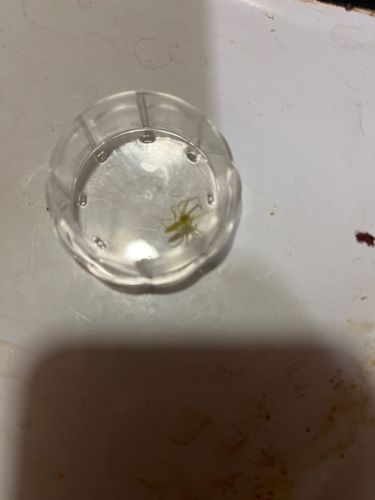Crab Spider (likely a Green Crab Spider or a species from the Thomisidae family)
Scientific Name: Likely a species within the family Thomisidae, such as Misumena vatia (Goldenrod Crab Spider) or a similar genus. Exact species identification is difficult from the image.
Order & Family: Order: Araneae, Family: Thomisidae
Size: Typically small to medium-sized, ranging from 2 mm to 10 mm in body length, depending on the species and sex (females are usually larger than males).

Natural Habitat
Various habitats, but most commonly found on flowers, foliage, and sometimes on bark or leaf litter. They often choose locations where their natural camouflage helps them blend in, such as on yellow or white flowers for yellow/white species, or green plants for green species.
Diet & Feeding
Mainly insects, including bees, flies, butterflies, and other pollinators that visit flowers. They use their strong front legs to grasp and overpower their prey.
Behavior Patterns
Crab spiders are ambush predators. They do not build webs for catching prey but instead lie in wait, often on flowers or leaves, perfectly camouflaged to surprise their prey. They are known for their ability to walk sideways and backwards, similar to crabs, which aids in their hunting strategy.
Risks & Benefits
Crab spiders are generally harmless to humans. Their venom is potent enough for their insect prey but not considered medically significant to humans, and bites are rare and usually cause only minor local irritation. Ecologically, they are beneficial as natural pest control, preying on a variety of insects.
Identified on: 8/13/2025